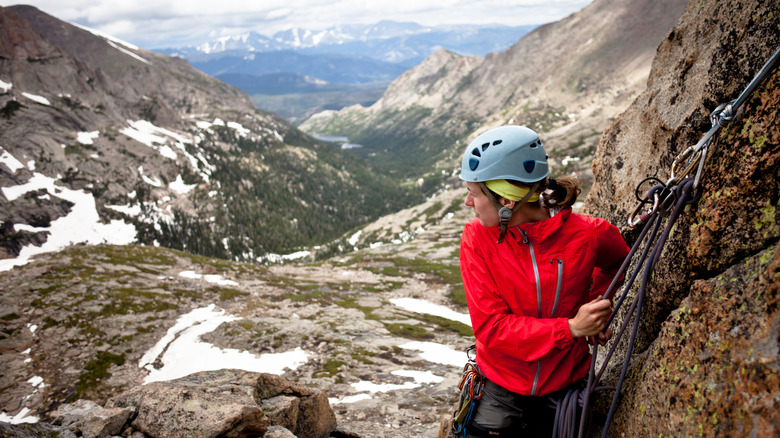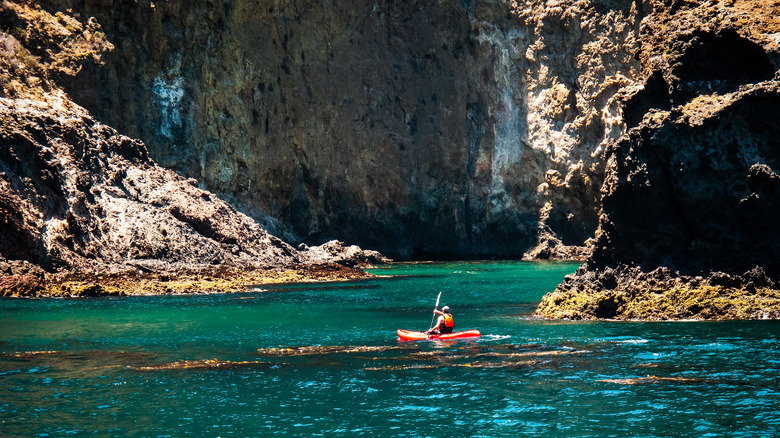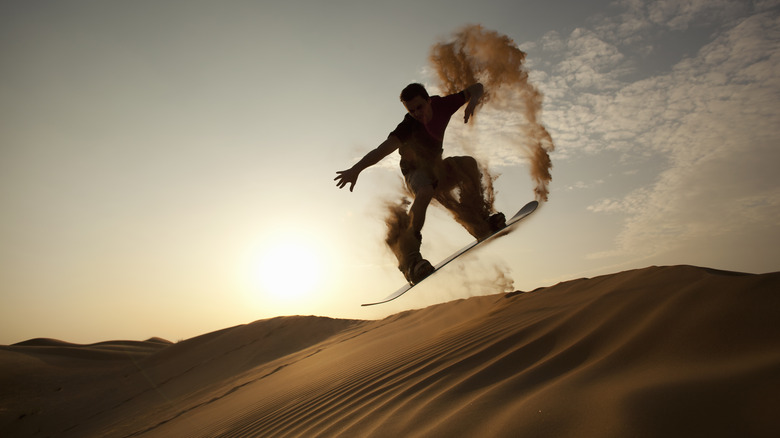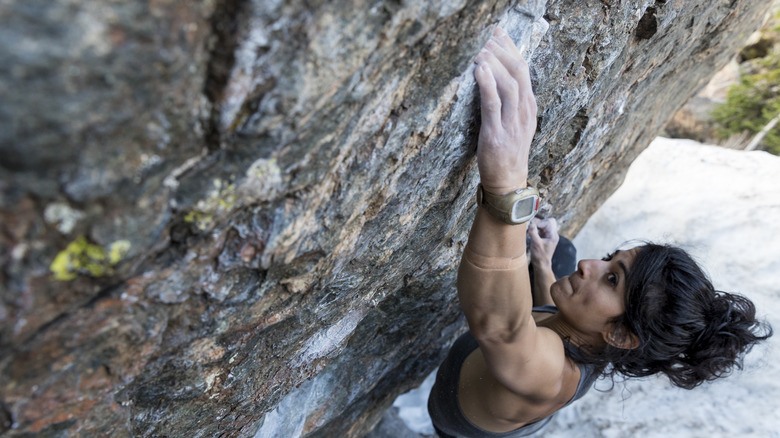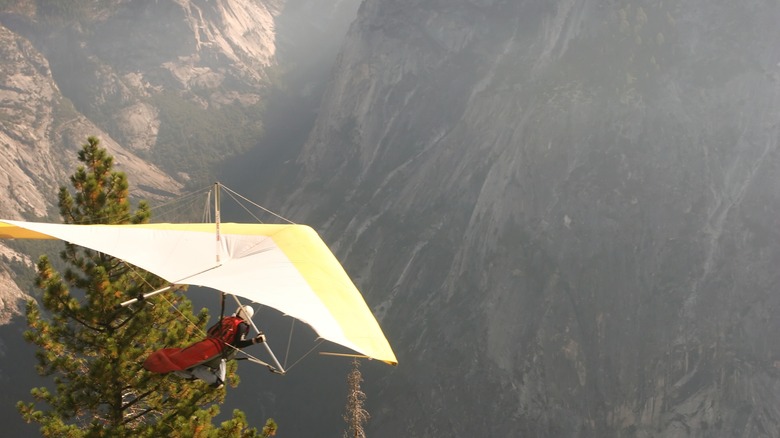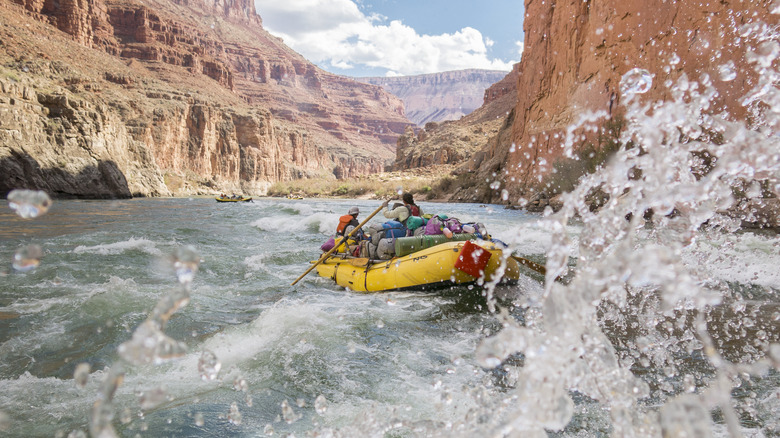Thrill Seekers Will Love These Adventures Found In US National Parks
Extreme outdoor sports and adventures have risen dramatically in popularity since the pandemic. Initially, it was assumed the increase was just due to people being locked inside for a year. However, the uptick has continued to this day. So why have extreme sports continue to grow in popularity? For many, it is the adrenaline rush and the feeling of truly being alive and experiencing something most others do not. But, according to an article published in Outside magazine, an even deeper reason exists –- the desire to be more in tune with nature and the natural world. This is certainly a plausible explanation, given the majority of Americans live in urban or suburban areas today and perhaps yearn for a connection to the outdoors beyond their own backyards.
Regardless of their motivation, those looking for extreme outdoor adventure may be surprised to learn our national parks offer an almost endless array of opportunities. It may not come as a surprise that among the best extreme sport destinations are some of the nation's most dangerous national parks, as their rugged terrain provides the perfect platform for such adventures. However, they are also among the most breathtaking places to camp and explore. Given the combination of natural beauty and adventure, there is no doubt thrill seekers will love these adventures found in U.S. national parks.
Kayak the Channel Islands
The Channel Islands are a cluster of islands located across the Santa Barbara and San Pedro channels from mainland California. The eight islands range from 27 to 70 miles off the coastline. Several of these islands, known as the Santa Monica Group, make up the Channel Islands National Park, which is considered a must-visit marine park for a multitude of reasons. One of the primary reasons many people do visit the Channel Islands National Park is to kayak the waters surrounding the islands.
The first step to exploring the Channel Islands is getting to the Channel Islands. Although the national park has visitor centers on the mainland, the only way to reach the actual islands is by boat. This can be arranged by private charter or by taking the public transportation ferries from various locations. When it comes to kayaking around the islands, although the scenery is awe-inspiring, the National Park Service is quick to remind visitors they will be paddling on the Pacific Ocean and many dangers exist. This is certainly not a leisurely paddle and is no time to make any common kayaking mistakes, as the NPS reports numerous fatal and near-fatal kayak incidents in the park each year. To that end, while it is possible to transport your own kayak on the ferry and have a DIY adventure, visitors are strongly encouraged to take part in guided tours with park staff or authorized private outfitters.
Slalom the Great Sand Dunes
Despite the explosion of outdoor activities over the past decade, skateboarding remains the most popular extreme sport in the United States. At the Great Sand Dunes National Park in southern Colorado, thrill seekers are doing something very similar only without wheels — sandboarding. Actually, sandboarding is something of a cross between skateboarding, surfing, slalom skiing, and snowboarding. It has gained popularity among enthusiasts from each of those sports, as well as some who are just looking to try something different.
First-timers should be advised that while it appears sandboarders are just hopping on any old piece of wood, not every item will slide and glide over the sand. Sandboards are actually specially designed pieces of equipment, just like surfboards or snowboards, that have fitted foot pockets and a waxed underside. Luckily for those just wanting to dip a toe in the sandboarding world, they can rent boards from several shops surrounding the park. Sandboarding is allowed throughout the park and there is a wide range of dunes of different heights and slopes offering varying degrees of difficulty. Beginners are encouraged to start on smaller, more gently sloped dunes. Additionally, visitors are advised to avoid taking to the dunes during the midday hours, as the sand can become scalding hot. If you are a first-timer and not quite confident enough for a standing ride, you can also rent a sand sled, which is ridden essentially the same as a snow sled.
Climb the Rocky Mountains
Although skateboarding still tops the list of most popular extreme sports, rock climbing is third and climbing fast. In fact, rock climbing is the fastest-growing extreme sport in the U.S. While there are numerous venues, both indoor and outdoor, scattered across the country, Rocky Mountain National Park is an ideal destination for climbing enthusiasts. In fact, while the widespread wave of climbing popularity in the U.S. is a recent phenomenon, the National Park Service states climbing has been popular in the Rockies for more than a hundred years. While the RMNP offers dozens of climbs, some can be quite difficult and even dangerous. So, before embarking on a trip to the Rocky Mountain National Park, it's best to find the right route for your ability level. Regardless of the climb you choose, it is important you follow proper safety protocol on your mountain adventure.
Beyond the ability to challenge numerous hikes of varying difficulty, climbers heading to Rocky Mountain National Park will be treated to some of the best mountain views in the United States. These views are undoubtedly enhanced when clinging to the side of a cliff. Additionally, RMNP is considered one of the best places to camp in the U.S., so climbers may want to consider overnighting to extend their stay and take advantage of the park's many hiking opportunities. Be advised that while permits are not needed to climb, if you overnight you will need a Backcountry Wilderness Camping Permit.
Hang glide over Yosemite
Yosemite National Park is on almost everyone's national park bucket list. Much of what draws visitors to this popular park is typically activities such as camping, hiking, and fishing, which can all be enjoyed with the dramatic backdrop of Sierra Nevada Mountain. However, one extreme sport you won't find on the park's list of things to do gives thrill-seeking tourists of a bird's eye view of it all.
Hang gliding in Yosemite National Park was pioneered in the 1970s by a few park rangers. From that point until 1992, the NPS offered hang glider tours under the supervision of a growing number of park rangers. However, since then hang gliding activities within the park's boundaries have been conducted by the Yosemite Hang Gliding Association. The permit issued to the association allows for Class 1 and 2 non-powered hang gliding. However, even under the supervision of the YHGA, hang glider pilots are limited to certain areas of use and landing locations. Additionally, hang gliding is only allowed within Yosemite National Park from June 1 to October 1 and can only be launched between 7 – 9 a.m. each day during that period. As a result, hang glider pilots hoping to get a glimpse of Yosemite from the air should contact the Yosemite Hang Gliding Association well in advance to reserve a time to fly.
Raft through the Grand Canyon
Grand Canyon National Park is the second most-visited national park in the United States. While the vast majority of the nearly five million visitors catch a glimpse by peering cautiously over the guard rails at the top of the canyon, there are those who prefer to take it all in by looking up. Those who gain this vantage point do so by rafting the wild and winding Colorado River through the steep canyon walls. Not only does riding the river on a raft give paddlers a unique perspective of the geology of the Grand Canyon, rafting also lets them feel firsthand the power of the water which carved this gorge through the Arizona desert over millennia.
There are a variety of rafting trips that can be planned in various parts of the Grand Canyon National Park. Picking the right option comes down to your experience, available time, and whether you want to go it alone or hire a guide. Guides and outfitters permitted to operate in the park offer one-day as well as three- to 18-day commercially guided trips. One day trips typically stick to the calmer waters and are the best option for novice paddlers. Longer trips hit varying degrees of difficult rapids. DIY paddlers can also apply for permits for self-guided rafting excursions. Permits for two- to five-day self-guided trips are first-come, first-serve. Permits for 12- to 25-day self-guided trips are available through a lottery system.
